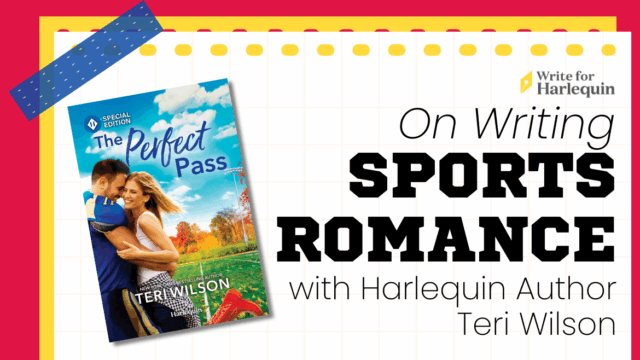
Write for Harlequin wants to get Back to Basics! Join us over the next month for a series of posts on romance-writing fundamentals. Whether you want tips on creating characters and conflict or polishing your plotting, this Back to Basics blog series has you covered.
Welcome back to this month’s Back to Basics series, where we’re talking all about the fundamentals of romance writing! You may have already read our post on character building (if you haven’t, check it out).
One of the building blocks of a solid romance that goes hand-in-hand with well-developed characters is a strong romantic conflict with high romantic stakes. A high-stakes romantic conflict drives the story forward and keeps readers hooked until the happily-ever-after. Without romantic conflict and intense stakes, what have we got? A happy couple—and if we have this from page one, why read further? 😊
What is romantic conflict?
Romantic conflict is, quite simply, the forces keeping your couple apart. Strong romantic conflict comes from giving your leading couple both internal and external obstacles to overcome on their romantic journey. If you’re looking for a deep dive into conflict, look no further than Harlequin Presents Editor Flo Nicoll’s wonderful webinar on building romantic conflict.
What are romantic stakes?
If romantic conflict is the obstacles in a couple’s way, we could think of romantic stakes as the risks for your leading couple in choosing love. The higher the risk (the more they have to lose), the more compelling the romance!
Here are five tips for creating a high-stakes romance:
ONE: Make love come at a high cost for your characters. Consider what each of your leads wants most in the world, and how love threatens that. Make it difficult for them to choose love over the course of the book. This excellent post by Victoria Curran further explores this—I highly recommend reading it!
TWO: Clarify the consequences. It’s often obvious in a romance novel what the characters have to gain by choosing love. Remember to make it clear what they stand to lose. Emphasizing the consequences of choosing love, especially the emotional ones, adds pressure! Perhaps one of your leads is a widowed single parent. Falling for someone else might feel like a betrayal to their late spouse while also threatening the stability they’ve created for their child—high stakes indeed!
THREE: A ticking clock adds tension. Consider this: your leads have to make a big decision. What if they had a limited time to do that? Perhaps one character is about to leave town for a big opportunity, or the leads have met during a weeklong vacation overseas. Now your leads have a life-altering choice to make, and they don’t have much time to think it through.
FOUR: Build tension with every scene. Consider the stakes in every scene and how you can raise them. Perhaps your leads have got off on the wrong foot and would rather avoid each other. However, a new circumstance—like being strong-armed into helping with a local festival—throws them together the next day. Now they’re forced back into each other’s company with their bad first impressions hanging over them.
FIVE: The higher the stakes, the bigger the payoff! The more obstacles you throw at your leading couple, and the bigger the risks, the more satisfying their happy ending is when they overcome it all and choose love. Just ask Harlequin Romantic Suspense Editor Patience Bloom, who writes all about it here!
Remember to have fun and be thoughtful when creating characters and conflict that will keep readers hooked to the very end. Putting your leading couple through the ringer might not be much fun (or maybe it is for you! 🙂 ), but it can make for an emotionally satisfying and un-put-down-able romance!




